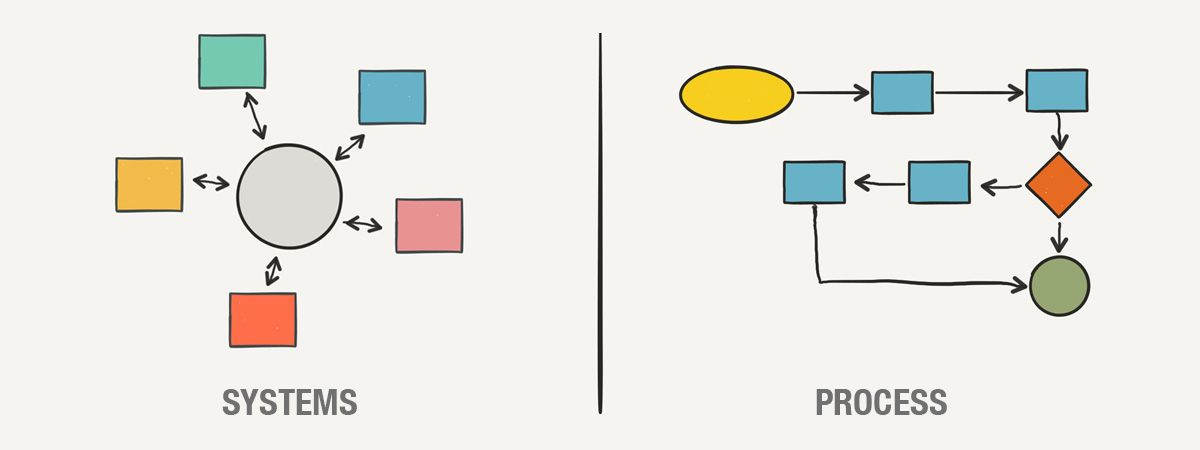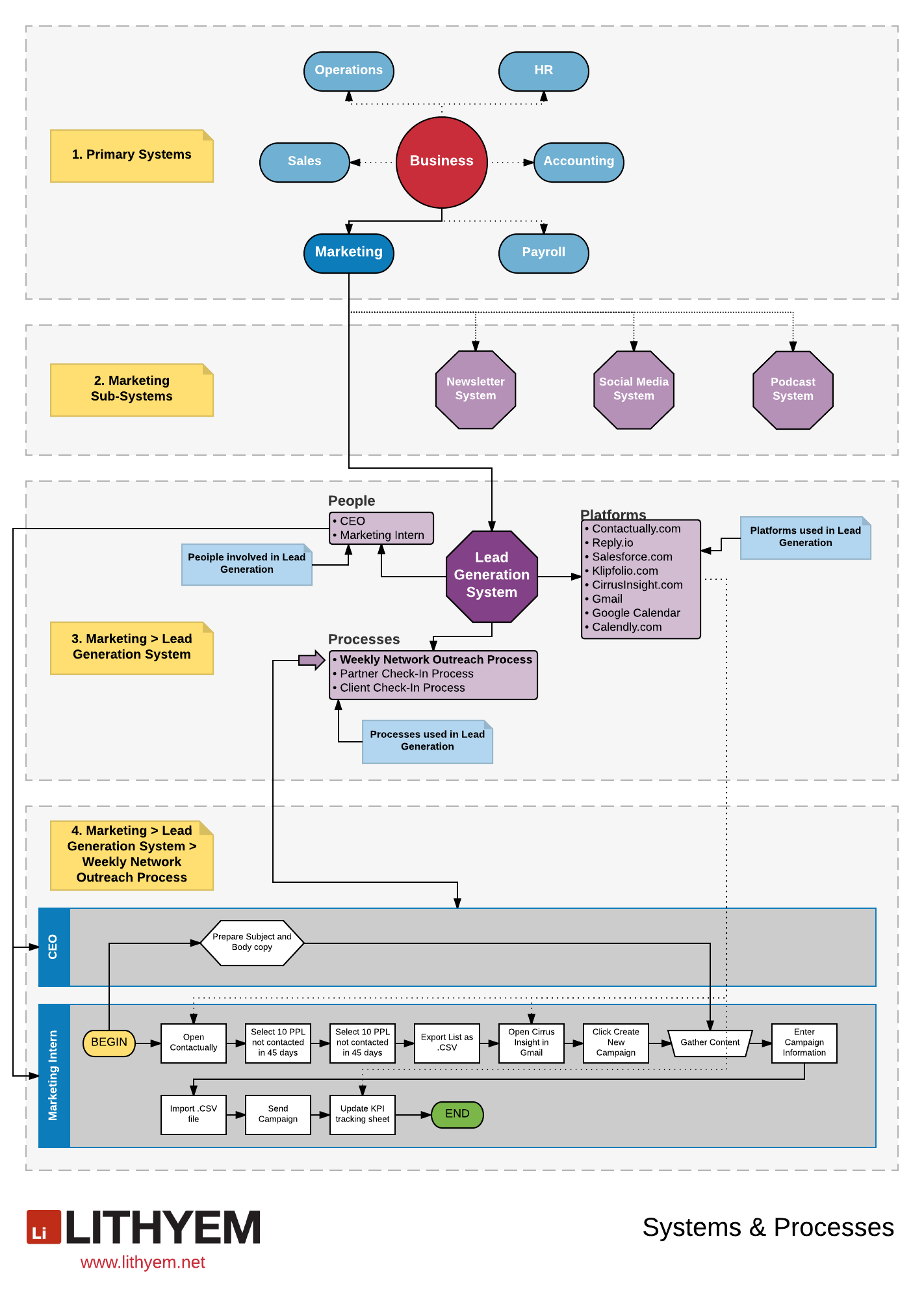
I presented a workshop a few weeks ago for CONNECT called Bulletproof Information Systems and I noticed that what people struggled with most was understanding the distinction between a System and a Process. When asked to list a process they would like to map out, many people listed things like marketing and lead generation, both systems not processes.
A light bulb went on – they don’t know the difference, and neither do most people.
Part of the problem is the use of the terms “system” and “process” and that they’re often used interchangeably although shouldn’t be.
I’ll define the terms here to start:
- Business Process – a series of ordered activities that convert inputs into higher-value outputs
- Business System – a group of interacting, interrelated, or interdependent elements organized to meet a particular set of business objectives
Some examples of Business Systems include:
- Marketing
- Sales
- Operations
- Order fulfillment
- HR
- Training
- Accounting
- Payroll
- Collections
- Service delivery
Let’s take Marketing for example. You understand that you don’t “do” Marketing. Marketing, instead, is a collection of people, systems, processes and platforms that combined make up the “Marketing System” for your business.
Zooming into Marketing will show systems within a system.
Under Marketing you might have the following sub-systems:
- Lead Generation Systems
- Newsletter Systems
- Social Media Systems
- Direct Mail Systems
- Podcast Systems
For each of these systems you may have more systems but will certainly have processes. A process helps you run systems more efficiently.
Do you “do” Lead Generation? No, you don’t. You likely have a number of systems that produce new leads. You might, however, have a process for staying in touch with your business network. Let’s call it your “Weekly Network Outreach Process” which will detail exactly the steps and tools you use to contact and quantify your network outreach. The process is the recipe.
Your Weekly Network Outreach Process would be a series of steps which you use to perform the task – mapped out in a checklist or flowchart. (See image below)
I’ve created this illustration below that should help you visualize the connection between systems and processes.
Additional Notes
Generally speaking there are 3 types of processes in a business.
- Management processes include planning, organizing, controlling, and leading—the activities for governing your business
(e.g., developing strategy, management meetings, and board of directors or advisors). - Operational Processes constitute your core business functions and create the primary value stream for customers
(e.g., lead generation, sales, purchasing, production, order-fulfillment, shipping, and customer service). - Supporting processes uphold and sustain the core processes
(e.g., accounting, hiring, information systems, safety, and custodial).
If you’d like to chat about a technology strategy, systems improvement or software solutions, I’d love to have a conversation – contact me.
Cheers,
Michael


















4 Comments